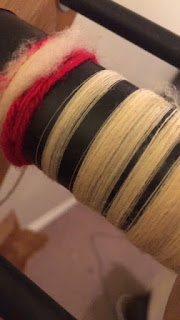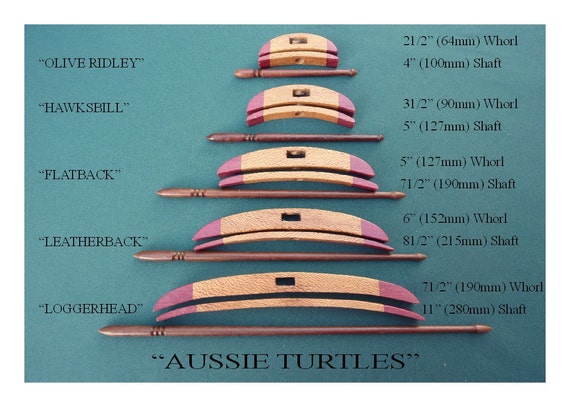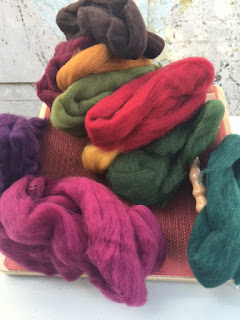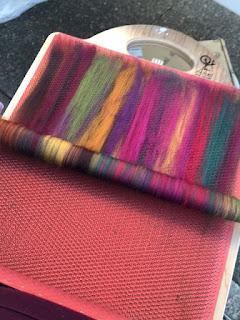 |
| Spindle spinning. Blue comparison thread is a standard sewing machine thread. |
So how thin can I spin?
 |
| Wheel spinning |
I also started spinning on my spindle. While this competitions top prize ($400 Ashford voucher) is for the wheel spun wool there are other categories for juniors, alpaca, e-spinner and spindle spinning. So I also started on my spindle. I will be away from home quite a bit this month and the entries have to be in by the end of the month. Sadly this month I will be going to two back to back medical conferences and I can't take my wheel with me. So spindle ahoy!
On a side note I was looking at some Facebook groups and noticed someone mention they were going to a conference this month in the same city asking for fiber store recommendations. I replied asking if they were going to thus particular one and lo and behold another spinner in such a small area of science I am in. So we are going to meet up and I am going to teach some spindle spinning. I was tempted to bring my spindle to the welcome drinks and when I get bored (as I will very quickly) I can alert her to my presence by sitting in the corner spindling. I hope I have the courage lol!
So I feel if I put it in by Thursday 27th with next day shipping it should be there by Friday. However, seeing I have recieved packages from Poland quicker than interstate shipping it will give an extra day just in case.
 |
| A total of 2 hours spinning and 1 gram of spun |
I will keep updated with how I go. If I don't make it I will post how much I end up achieving and compare to winners outcomes. The actual compeition wont be till next year, but the judes have a lot to examine, measure and weigh. So entries are super early. If things go well I might even attend this!
So as always I like attempting more than one thing so I would like to try wheel, spindle and alpaca. As this event is International and going on for awhile you can go through previous results and see people who have achieved personal bests and results from within Australia and positions world wide.
In the Wool the World standings (I think it is in meters)
Naoko T. Japan 1,442.982 Spindle 2005
Ernest J. Australia 1,210.922 Wheel 2003
Naoko T. Japan 1,131.457 Spindle 2003
Carol R. Australia 1,103.577 Wheel 2005
Sue M. UK 1,037.284 Wheel 2001
Alpaca World standings
Andrea R. Australia 182.088 Spindle 2015
Cheryl F. Australia 169.045 Wheel 2015
Joan D. Australia 140.734 Wheel 2015
Margaretha L. Denmark 117.586 Wheel 2015
Linda S. UK 102.033 Wheel 2015
The 2015 Winners (it competition seems to be every 2nd year)
Wool
Amanda H. 677.064 UK
Ann F. 300.370 UK
Andrea R. 279.356 Australia
Alpaca
Cheryl Fletcher 169.045 Australia Joan Dicker 140.734 Australia Margaretha Liebmann 117.586 Denmark
Spindle Wool
Wendy C. 126.193 USA
Cheryl F.111.375 Australia
Mary S.67.242 Ireland
Spindle Alpaca
Andrea R. 182.088 Australia
E-Spinner
Sandra D. 196.794 UK
Dean R. 117.533 Australia
Beth H. 110.544 USA
There are even more breakdowsn in the results to investigate.
So how fine and long can you spin?
Keep an eye on my Instagram page for my frequent updates.


























































